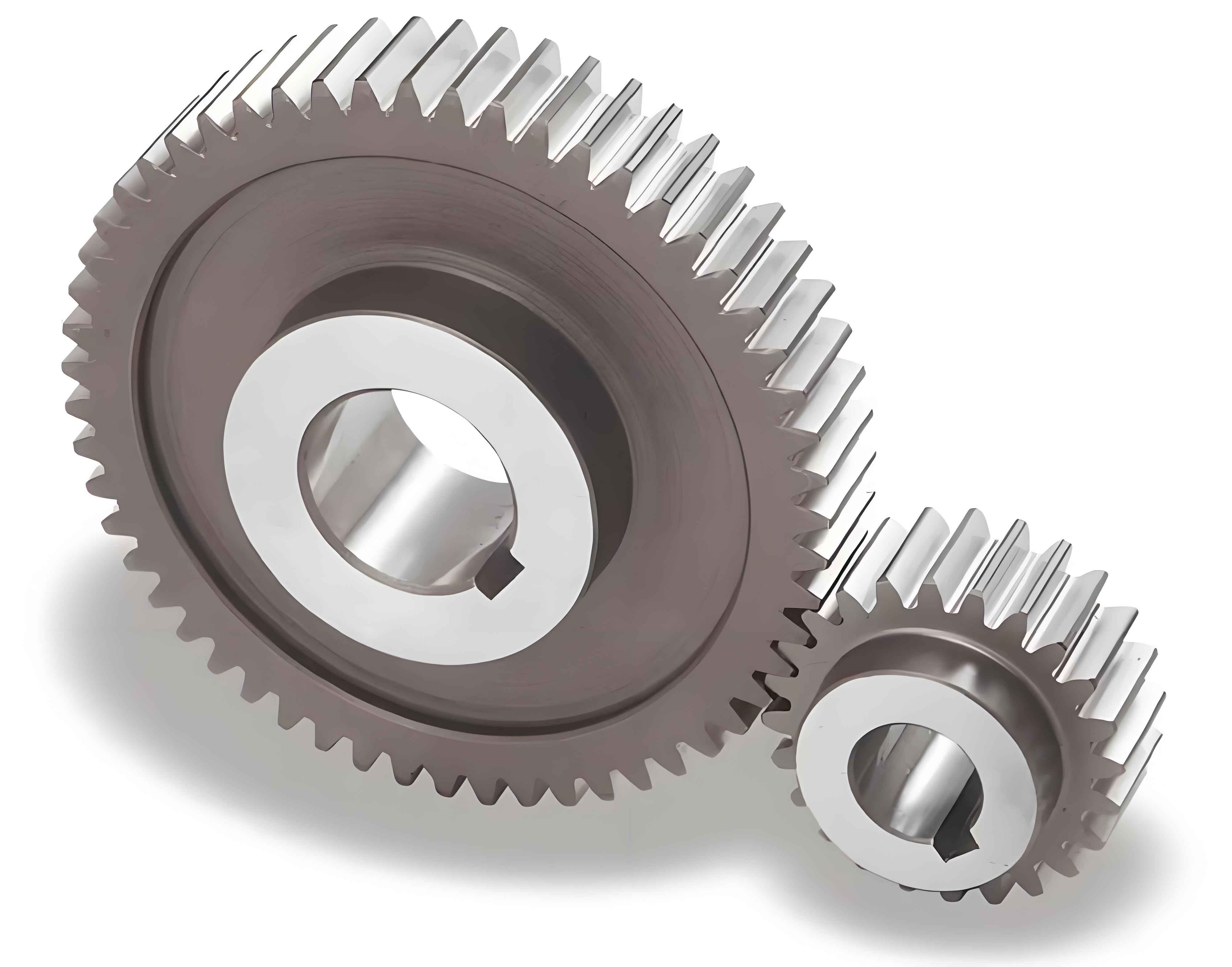Abstract
Based on the stress characteristics of spur gear static analysis and the stress time sub-step history of transient dynamics, combined with the tooth surface friction coefficient under Elastohydrodynamic Lubrication (EHL) theory, a spur gear contact fatigue life model is established using Workbench. The static finite element (FE) simulation results are verified by Hertz contact theory to determine the scaling coefficients in the stress history input. The S-N curve of the material is estimated, and the spur gear contact fatigue life is calculated using nCode within the framework of the Palmgren-Miner linear damage theory to obtain the life contour and hazardous node locations. The results indicate that the dangerous nodes of gear contact fatigue mostly occur at the two ends of the tooth surface along the line contact in the tooth width direction. The contact fatigue life is negatively correlated with input speed and load torque, positively correlated with the friction coefficient, and most significantly affected by load torque.

1. Overview
As critical components in helicopter main reducers, future advanced ultra-high bypass ratio turbofan engines, and gas turbine main reducers, gear transmission systems need to operate cyclically in complex and harsh working environments with extremely high reliability requirements. To assess the reliability of spur gear under high-speed and heavy-load conditions, research on spur gear component fatigue damage life is necessary.
Currently, research on spur gear contact fatigue life is mainly divided into three methods: numerical simulation calculation based on fatigue damage theory, direct testing based on traditional contact fatigue testing machines, and life prediction based on FE simulation modeling. The following table summarizes some key literature in this field:
| Literature | Research Focus | Methodology | Key Findings |
|---|---|---|---|
| [1] | Stress analysis under EHL | Comparison of Matake and Dang Van criteria | Gear contact fatigue life analysis |
| [2] | Influence of surface roughness | Multi-axial fatigue life model based on maximum principal stress and critical plane method | |
| [3] | Surface roughness distribution | Multi-axial fatigue prediction model based on fractal theory and Sines model | Validated through equivalent roller friction tests |
| [4] | Tooth surface damage prediction | Estimated depth of tooth surface damage using real topography measurements | |
| [5] | Fatigue damage initiation criterion | Mathematical model combining Fatemi-Socie criterion with multi-axial fatigue calculation | Compared with FE simulation results |
| [6] | Static and transient FE analysis | Fatigue life prediction based on time series load spectrum from transient analysis | |
| [7] | Simplified load spectra | Fatigue life analysis models under static and dynamic loads using Workbench | |
| [8] | Gear contact fatigue tests | Fitting of gear contact fatigue life curves | |
| [9] | Combined rolling contact fatigue and wear | Numerical fatigue life model considering mixed EHL, continuum damage mechanics, and Archard’s wear law | Validated through three-contact tests |
2. Spur Gear Meshing Process Analysis
2.1 Basic Parameters of Spur Gear
The spur gear used in a contact fatigue testing machine have the following parameters, as shown in Table 2:
| Gear Parameter | Driven Gear | Driving Gear |
|---|---|---|
| Number of Teeth | 24 | 16 |
| Module (mm) | 4.5 | 4.5 |
| Pitch Diameter (mm) | 108 | 72 |
| Tooth Width (mm) | 20 | 20 |
| Transmission Efficiency | 0.97 | 0.97 |
2.2 Tooth Surface Contact Strength
Hertz contact stress is primarily used for calculation in the tooth surface contact fatigue strength check, as illustrated (diagrammatic representation):
Experimental research shows that… (additional experimental details can be added here).
3. Methodology
In this study, Ansys Workbench and nCode are used for FE analysis. The FE simulation results are verified by Hertz contact pressure, and the spur gear contact fatigue model is established by considering the EHL friction coefficient with tooth surface roughness. A time sub-step load spectrum is compiled for full-size gears to investigate the influence of multiple working conditions and surface integrity on contact fatigue, providing directions for subsequent contact fatigue, pitting morphology test schemes, and material selection.
4. Results and Discussion
The results indicate that the dangerous nodes of spur gear contact fatigue mostly occur at the two ends of the tooth surface along the line contact in the tooth width direction. The contact fatigue life is negatively correlated with input speed and load torque, positively correlated with the friction coefficient, and most significantly affected by load torque.
Conclusion
This study presents a comprehensive approach to simulating spur gear contact fatigue life under multiple working conditions using FE analysis. By incorporating EHL theory and considering the influence of surface integrity, a more accurate prediction of gear contact fatigue life is achieved. The findings provide valuable insights for the design and optimization of spur gear transmission systems in harsh environments.
